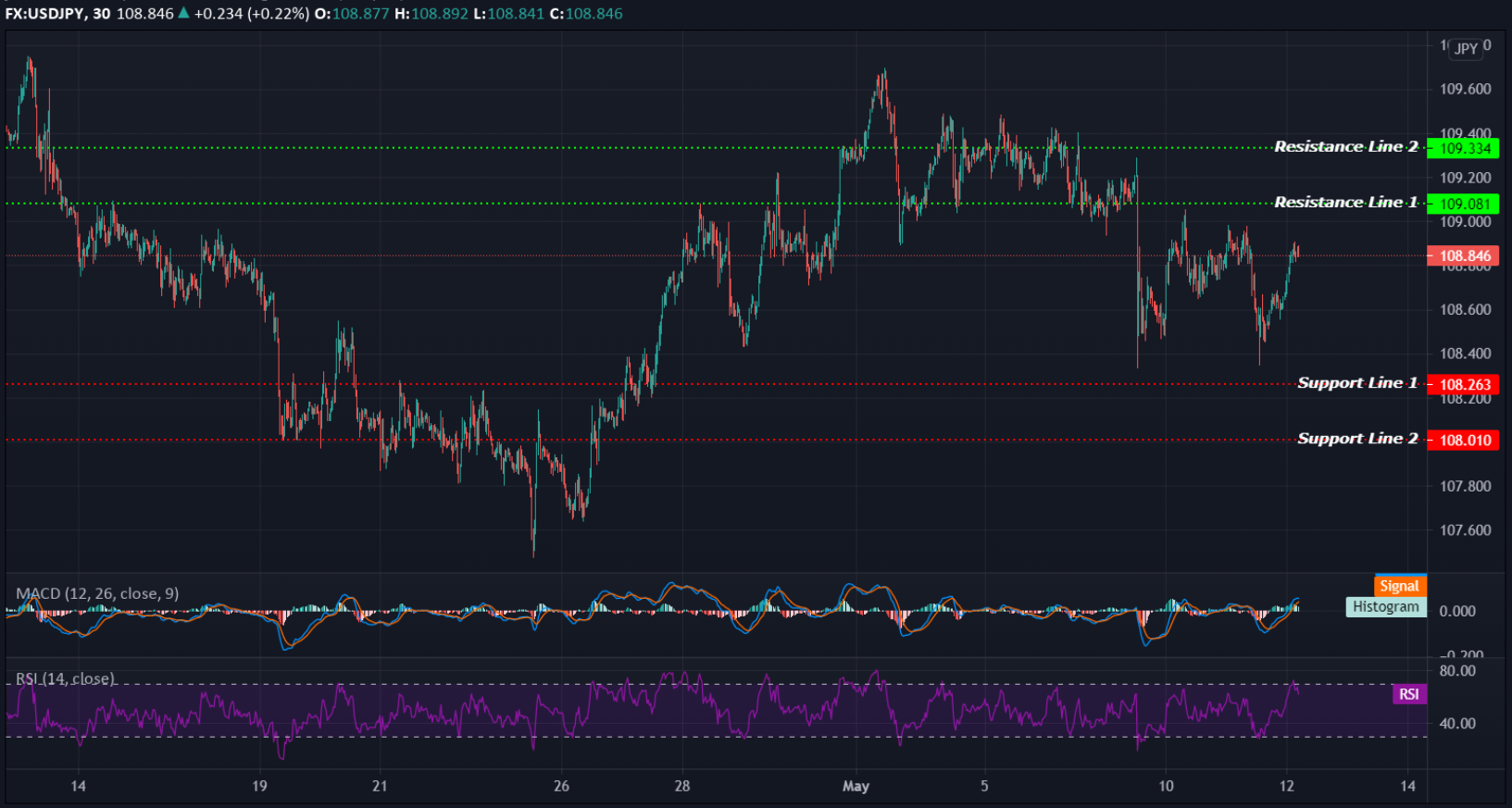EQUITIES
Shares in Asia-Pacific were lower on Wednesday trade. Japanese and South Korea stocks led declines across the region, as they slipped more than 2%. The benchmark Nikkei 225 shed 2.16%, while the KOSPI fell around 2.03%.
Elsewhere, the China markets also opened lower. Hong Kong’s Hang Seng Index fell 0.37%, while stocks in Shanghai traded almost flat, down 0.01%. The Australia’s S&P/ASX 200 slipped 1.01%, the Singapore’s FTSE Straits Times Index shed 0.63%, and the India’s S&P BSE Sensex index down 0.68%.
Overnight on Wall Street, the Dow Jones Industrial Average experienced its worst day since February, fell 1.36%, to 34,269.16. The S&P 500 lost 0.87%, to 4,152.1 and the Nasdaq Composite dropped 0.09%, to 13,389.43.
OIL
Oil prices fluctuated, driven by lingering fears of a gasoline shortage after a cyberattack caused an outage at the largest U.S. fuel pipeline system. The Brent crude futures traded at $68.38 per barrel, and U.S. crude futures traded at $65.35 per barrel.
Overnight, the Brent closed at $68.55 while WTI ended at $65.28 per barrel.
CURRENCIES
Investors are awaiting an inflation report and government debt sales in the U.S — the events that could trigger another bond sell-off.
The dollar index, which measures the greenback against six major currencies, scaled back higher at 90.38, after touching a 2-month low of 89.979 in the previous session after worries about rising inflation threatened to erode its value.
The yield on benchmark 10-year Treasury notes stuck to a tight range, last stood at 1.629%
Most commodity currencies stood firm amid rising commodity prices.
GOLD
Gold prices fell on Wednesday, weighed down by higher U.S. Treasury yields and a firmer dollar that dented the metal's safe-haven appeal.
The spot gold slipped to trade at $1,828.90 an ounce and fell to $1,828.40 per ounce for gold futures. Previously closed at $1,837.90 and $1,836.10, respectively.
ECONOMIC OUTLOOK
Asian shares fell for a second straight session on Wednesday over concern that investors speculated surging commodity prices and growing inflationary pressure in the U.S. could test the recovery from the pandemic, and lead to earlier rate hikes and higher bond yields globally.
All eyes are now on the U.S. CPI report to be released by the U.S. Labor Department later today with market-based measures of inflation expectations having moved higher. Debate continues over whether price pressures will be persistent enough to force the Fed to tighten policy sooner than current guidance suggests.
Data on Tuesday showed U.S. job openings surged to a record in March, reiterating that a shortage of workers was hampering job growth, even as nearly 10 million Americans are looking for employment.
OPEC raises demand forecast for its crude as U.S. supply slips. OPEC boosted estimates for the call on its output this year by 230,000 bpd, to an average of 27.65 million bpd.
Some key events to watch today including U.S. CPI report and Treasury budget, ECB policy meeting, IEA oil market report & UK GDP.
Among U.S. corporate earnings due today including Wendy's & Amdocs, while IPOs expected to start trading from SimilarWeb & Global-e Online.
To date, number of confirmed worldwide cases for COVID-19 pandemic has surpassed 159.33 million, recording more than 3.31 million fatality globally.
TECHNICAL OUTLOOK
[USDJPY]
Important Levels to Watch for Today:
- Resistance line of 109.081 and 109.334.
- Support line of 108.263 and 108.010.
Commentary/ Reason:
The dollar was up 0.22% against the Japanese yen at 108.846 as steadying T-note yields undercut the yen.
The pandemic situation in the U.S. also spark optimism. The situation has improved after the 7-day average of new COVID-19 infections fell to a 7-month low of 38,926 on Monday.
Traders hung on to bets that the Fed would remain steadfast in its easy policy settings ahead of data expected to show a sharp rise in annual U.S. inflation. Market participants now awaited the release of U.S. CPI data to gauge inflationary pressure and the Fed’s policy stance.















